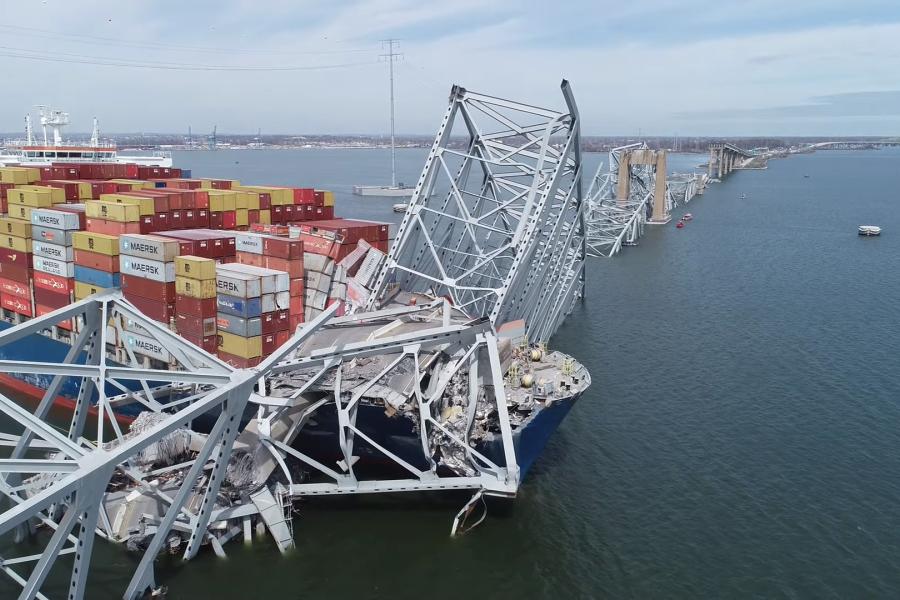- Name
- Jill Rosen
- jrosen@jhu.edu
- Office phone
- 443-997-9906
- Cell phone
- 443-547-8805
Believing chances are high for ships to hit United States bridges, like the catastrophe in Baltimore, Johns Hopkins University engineers have begun what they consider to be an urgent assessment of the country's bridges, particularly the larger ones near major ports of entry.
"We need to know now, not five or 10 years from now, whether there is an outsize risk to bridges across the country so that critical investments—which will take years—can begin immediately if they are needed," said team leader Michael Shields, a Johns Hopkins engineer specializing in risk assessment. "The Key Bridge collapse was a wake-up call."
With a National Science Foundation Rapid Response Research grant and the help of an "army" of students, the team will attempt to modernize risk prediction models, as the nature of shipping, particularly the prominence of massive cargo vessels, has increased considerably in the decades since most of these bridges were built.
"Clearly the risk to the Key Bridge was very different in 2024 than it was in 1977 when the bridge opened," Shields said. "But we don't currently understand that risk."
The team hypothesizes that the risk of the Key Bridge collapse was underestimated and that the probability of another catastrophic collision in the United States is likely "much higher" than current design standards presume.
The team will try to answer questions including:
- What is the probability that a ship the size of the Dali would stray from its path and collide with the Key Bridge?
- What are the chances for similar bridge collisions across the country?
- Have we underestimated the probability of collision and ultimately the probability of failure of critical U.S. bridges?
The team will mine global shipping data, develop modern risk models, and then attempt to identify which critical U.S. bridges are vulnerable to a catastrophic ship collision. Using the shipping data, they will build models to determine the probability of a ship deviating from course and hitting a bridge in or around major ports.
"Preliminary findings already challenge prevailing assumptions," said team member Rachel Sangree, a structural engineer and former bridge inspector. "The U.S. has seen 17 incidents of major bridge collapse between 1960 and 2011, averaging one every three years. Between the exponential growth of mega freight ships and the surge in global shipping traffic, many of our bridges simply weren't built to withstand the pressures of today's maritime landscape."
The findings will help policymakers prioritize infrastructure improvement spending.
"The team's findings will be crucial in reassessing and potentially redefining the safety standards for transportation infrastructure," said structural engineer Ben Schafer, a professor in the Department of Civil and Systems Engineering. "Given the estimated $1.7 billion to $1.9 billion cost to rebuild the Key Bridge and the potential billions needed to retrofit existing bridges, accurate risk assessment is vital to ensure the sustainability of society's critical infrastructure."
The team has already begun its investigation and hopes to share some preliminary results with stakeholders by the end of the summer, with the full study taking approximately one year to complete.
Posted in Science+Technology
Tagged civil engineering, infrastructure








